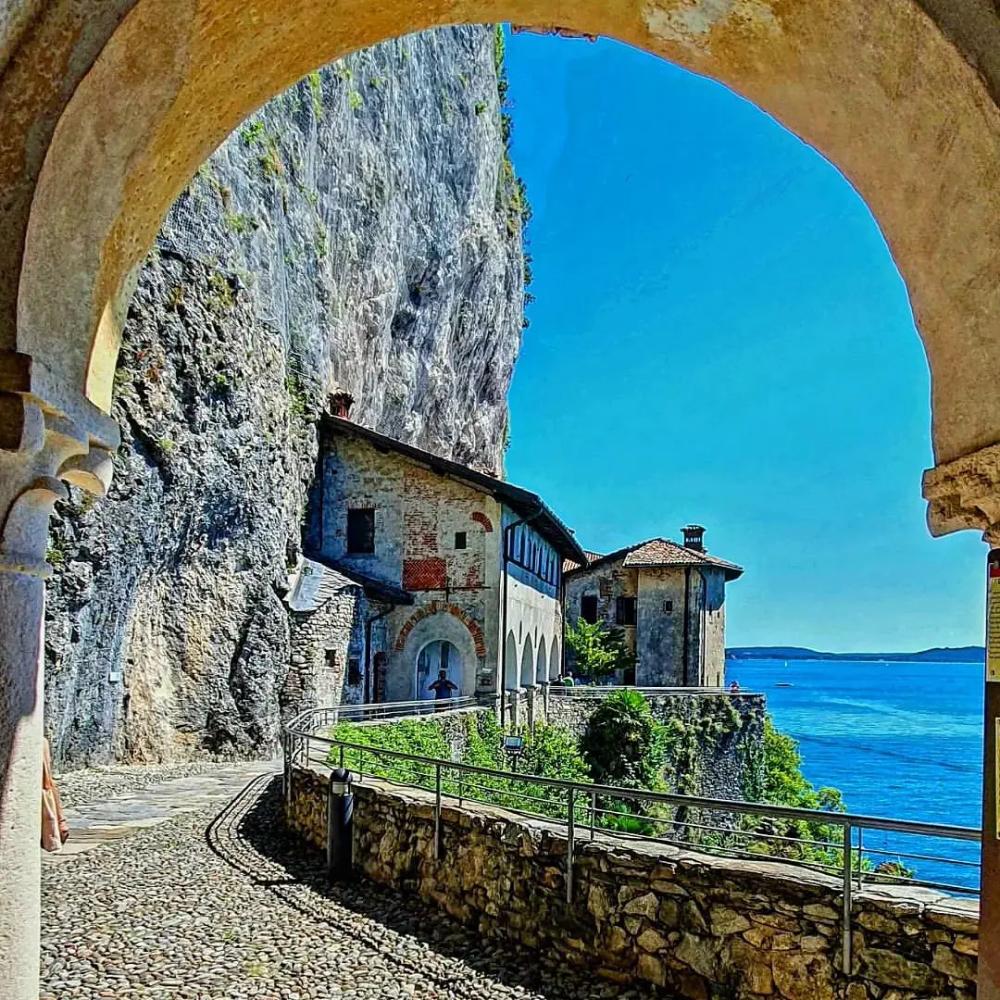Introduction to Santa Caterina del Sasso
Santa Caterina del Sasso is a 12th-century monastery on the eastern shore of Lake Maggiore. This architectural gem offers:
- - A unique Romanesque style
- - A breathtaking location on a rocky overhang
- - An experience that combines history, art and nature
The Legend of Alberto Besozzi
The foundation of the hermitage is linked to a fascinating legend:
- - Alberto Besozzi, a wealthy merchant, survived a shipwreck
- - He made a vow to St. Catherine and became a hermit
- - His story inspired the construction of the complex
Architectural Wonders of Santa Caterina del Sasso
The complex consists of three main buildings:
- - Southern Convent
- - Conventino
- - Church with precious frescoes
Additional Tips on Santa Caterina del Sasso
- - Audio guide service available
- - Ample parking at the ticket office
- - Consult official website for schedules and church services
Explore Santa Caterina del Sasso as an Expert
🌟 Unveil the Secrets of Santa Caterina del Sasso and Lake Maggiore! 🌟
Our comprehensive guidebook offers:
Our comprehensive guidebook offers:
- - In-depth section on Santa Caterina del Sasso written by a local expert
- - Best experiences on the lake
- - Customized Itineraries
- - Exclusive tips and local secrets
- - And much more!
Only €0.00
Instantly in your email!
By purchasing I accept the terms and conditions
The guide is in English
Frequently Asked Questions
How to get to the Hermitage of Santa Caterina del Sasso?
The Hermitage of Santa Caterina del Sasso can be reached mainly by car by following Via Santa Caterina No. 13.
What makes the Hermitage of Santa Caterina del Sasso unique?
What makes the Hermitage of Santa Caterina del Sasso unique is the lake landscape that hosts it.
What to see near Hermitage Santa Caterina del Sasso?
Near the Hermitage of Santa Caterina del Sasso is the site of the Christmas lights of Leggiuno.
Where is the Hermitage of Santa Caterina del Sasso located?
The Hermitage of Santa Caterina del Sasso is located in Italy, in Leggiuno (VA).
